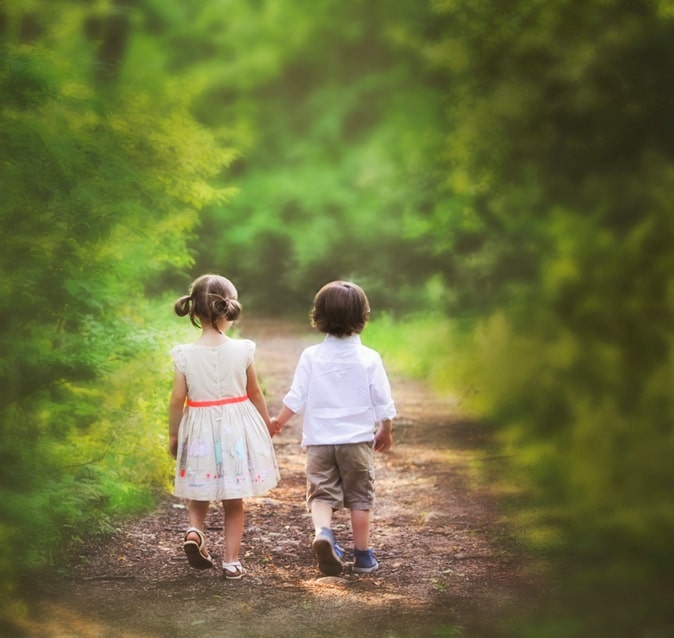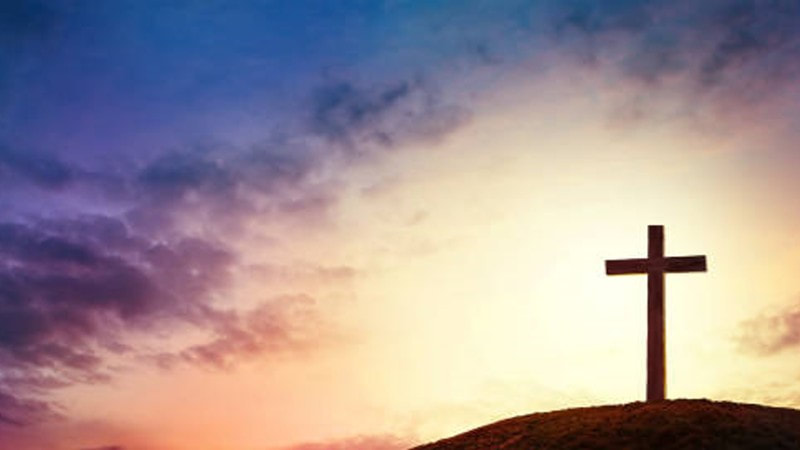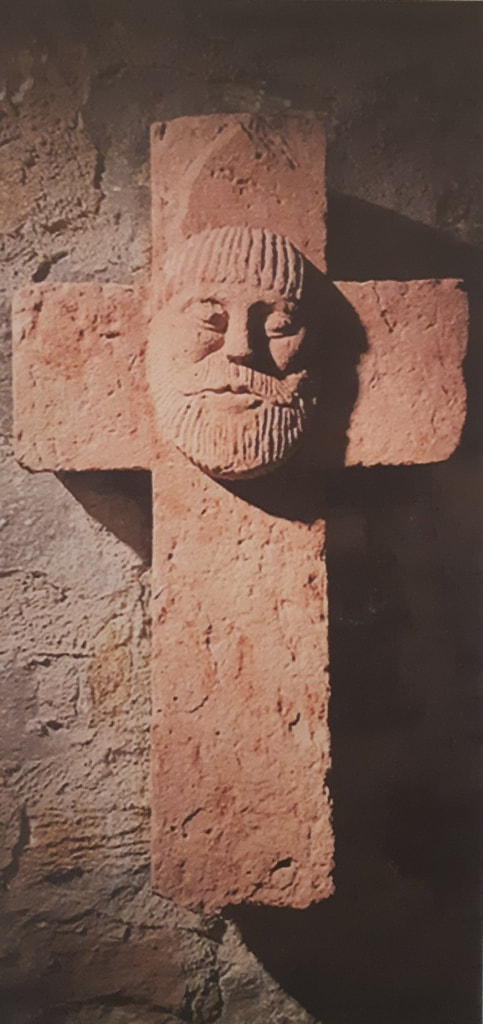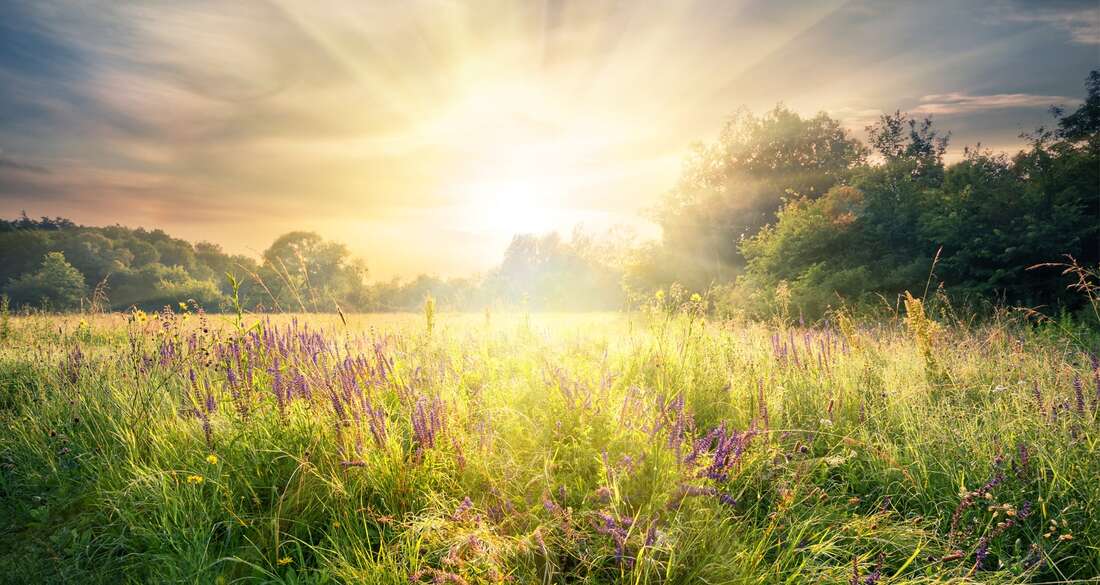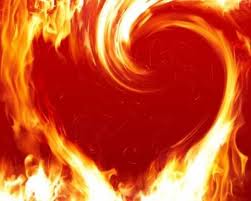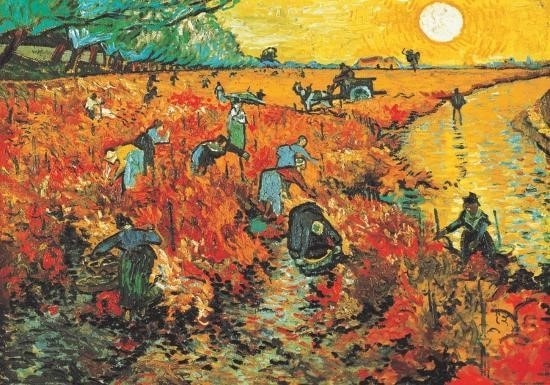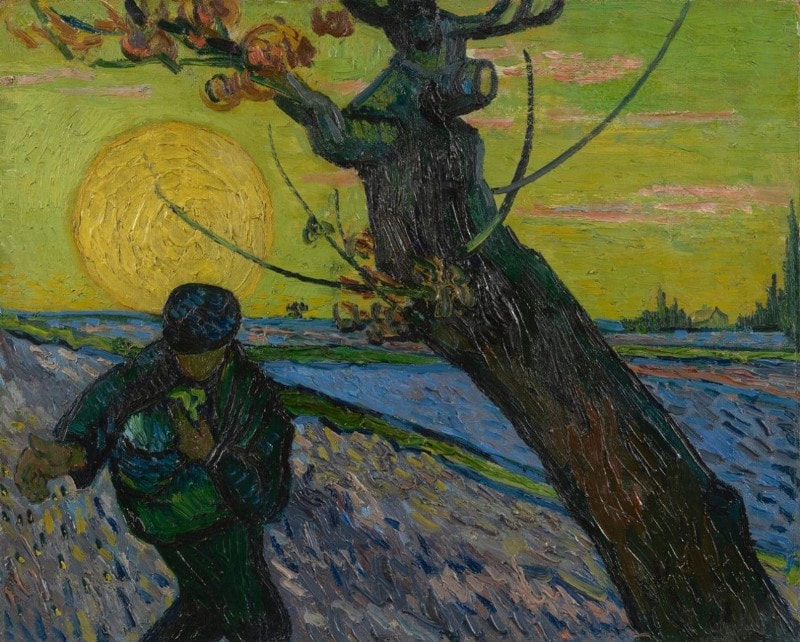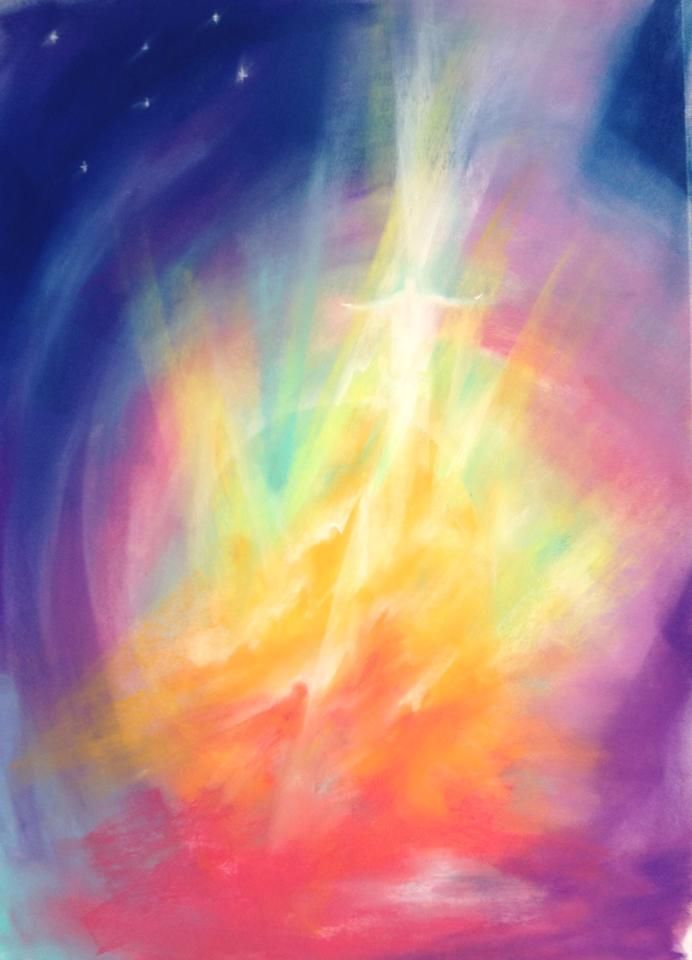Contemplations
The Advent of things to come
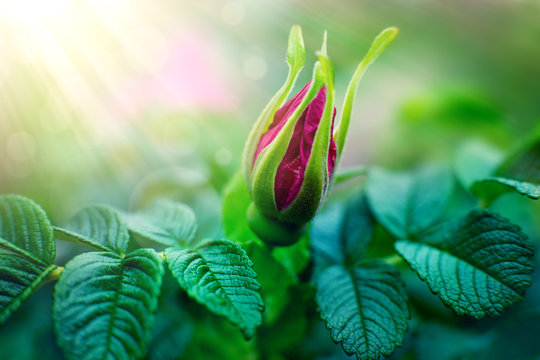
by Rev. Michaël Merle
Advent is not only the season of reflective preparation for the celebration of the Nativity at Christmas but also the season of anticipation of the things yet to come – a time of celebrating what lies ahead in the future as we live out of a sense of Christ's appearance in the world of living, formative forces. Advent is, thus, a season of expectation, much like a gestation is a time of expecting a birth. Now our advent expectation is about our becoming.
What do we understand by the word ‘becoming’? Do we consider the coming into being of that which is becoming? If we are already a being, what exactly is the being that is coming? The art of be-coming is a process of renewal and reformation, it is the process of the change from our present being to our future being. We may wonder as to how we may change into that future being. This is the process of becoming: the process of growth, evolution, unfolding, manifesting anew, the process of coming into future being.
We find ourselves in the experience of that which is about to come, that which is arriving, the advent of the future now.
These are the ideas, the reality, the spiritual principles at play, that are addressed in our Advent Epistle. It is the essence of the vision of the future of the child in the Sacrament of Baptism: to be, grow and become.
Advent teaches us that we are moving in a forward direction – always engaged in the hope of the advent of things to come. We are on the great advent-ure of earth existence, and it is here that we can move into the future every moment of every day.
The significant thought that we encounter in our Advent Epistle is that our becoming is connected to God’s becoming. Do we think of God as a being in becoming? If we are made in the image and likeness of the Divine, and we are beings in becoming, then is that reality not a reflection of God's reality? We celebrate an extraordinary advent in this season: the advent of God’s becoming, the advent of God to come. May this Advent season be filled with an ever growing sense of becoming, of the wonder and excitement of things to come.
Advent is not only the season of reflective preparation for the celebration of the Nativity at Christmas but also the season of anticipation of the things yet to come – a time of celebrating what lies ahead in the future as we live out of a sense of Christ's appearance in the world of living, formative forces. Advent is, thus, a season of expectation, much like a gestation is a time of expecting a birth. Now our advent expectation is about our becoming.
What do we understand by the word ‘becoming’? Do we consider the coming into being of that which is becoming? If we are already a being, what exactly is the being that is coming? The art of be-coming is a process of renewal and reformation, it is the process of the change from our present being to our future being. We may wonder as to how we may change into that future being. This is the process of becoming: the process of growth, evolution, unfolding, manifesting anew, the process of coming into future being.
We find ourselves in the experience of that which is about to come, that which is arriving, the advent of the future now.
These are the ideas, the reality, the spiritual principles at play, that are addressed in our Advent Epistle. It is the essence of the vision of the future of the child in the Sacrament of Baptism: to be, grow and become.
Advent teaches us that we are moving in a forward direction – always engaged in the hope of the advent of things to come. We are on the great advent-ure of earth existence, and it is here that we can move into the future every moment of every day.
The significant thought that we encounter in our Advent Epistle is that our becoming is connected to God’s becoming. Do we think of God as a being in becoming? If we are made in the image and likeness of the Divine, and we are beings in becoming, then is that reality not a reflection of God's reality? We celebrate an extraordinary advent in this season: the advent of God’s becoming, the advent of God to come. May this Advent season be filled with an ever growing sense of becoming, of the wonder and excitement of things to come.
A New Seeing
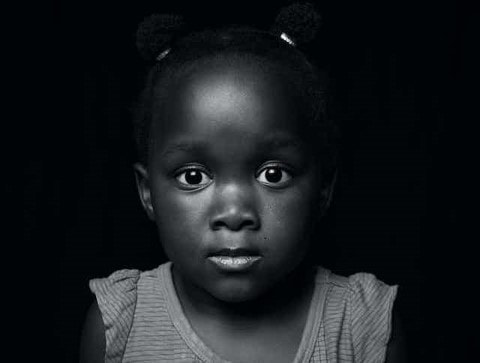
by Rev. Michaël Merle
What precedes our finding? Seeking.
What determines our finding? Seeing.
We seek, and out of our seeking comes the possibility to find, but that is only determined when we have recognised – seen – that which we seek. It is imperative that we are able to gain the sight required to know that we are indeed seeing manifest before us that which we have been seeking. It is often a question not so much of knowing what it is we are seeking but of being able to recognise that we have found it once we encounter it. This sight which leads to insight and which accompanies the expression: “I'll know it when I see it”, is the essential feature of our spiritual progress.
In the month of November we find ourselves in the transition from Michaelmas to Advent. The Sunday pericopes are drawn principally from the Revelation to John. In being drawn into the realm of Spirit, John is presented with a mighty unfolding vision of the Spiritual World. He has the responsibility to see what unfolds before his eyes. He is presented with pictures that at once capture his imagination but remain mysterious – beyond his everyday comprehension. He is faced with the question: “I know what I am seeing but what does it mean?” In one passage of Revelation he recounts being asked what the meaning is of the events and happenings he is witnessing. He responds to the mighty spiritual Lord who questions him with: “You know, my Lord.” It takes a true humility to see the truth before our eyes and be open to the guidance we need to understand its meaning and significance.
How do we develop our sight and our reliance on the guidance of the Spiritual World? One way in which we can school our insight and openness is in our participation in the Act of Consecration of Man. Here we are invited not only to find what we are seeking but to see it with our inner vision, to recognise it and bring ourselves into relationship with the Spiritual World as we are guided to a deeper comprehension – one that often times goes beyond words. This strengthens our capacity to become conscious once we have crossed the threshold to what we need to come to terms with. An opportunity to see that which we encounter every day and view it with new questing (questioning) eyes is another strengthening aspect. As we prepare for Advent and the coming of a new year may we find the way to a new sight which leads us evermore into the depth of the relationship with Christ and through him to all in our world.
What precedes our finding? Seeking.
What determines our finding? Seeing.
We seek, and out of our seeking comes the possibility to find, but that is only determined when we have recognised – seen – that which we seek. It is imperative that we are able to gain the sight required to know that we are indeed seeing manifest before us that which we have been seeking. It is often a question not so much of knowing what it is we are seeking but of being able to recognise that we have found it once we encounter it. This sight which leads to insight and which accompanies the expression: “I'll know it when I see it”, is the essential feature of our spiritual progress.
In the month of November we find ourselves in the transition from Michaelmas to Advent. The Sunday pericopes are drawn principally from the Revelation to John. In being drawn into the realm of Spirit, John is presented with a mighty unfolding vision of the Spiritual World. He has the responsibility to see what unfolds before his eyes. He is presented with pictures that at once capture his imagination but remain mysterious – beyond his everyday comprehension. He is faced with the question: “I know what I am seeing but what does it mean?” In one passage of Revelation he recounts being asked what the meaning is of the events and happenings he is witnessing. He responds to the mighty spiritual Lord who questions him with: “You know, my Lord.” It takes a true humility to see the truth before our eyes and be open to the guidance we need to understand its meaning and significance.
How do we develop our sight and our reliance on the guidance of the Spiritual World? One way in which we can school our insight and openness is in our participation in the Act of Consecration of Man. Here we are invited not only to find what we are seeking but to see it with our inner vision, to recognise it and bring ourselves into relationship with the Spiritual World as we are guided to a deeper comprehension – one that often times goes beyond words. This strengthens our capacity to become conscious once we have crossed the threshold to what we need to come to terms with. An opportunity to see that which we encounter every day and view it with new questing (questioning) eyes is another strengthening aspect. As we prepare for Advent and the coming of a new year may we find the way to a new sight which leads us evermore into the depth of the relationship with Christ and through him to all in our world.
A new era: the next hundred years in a Michaelic impulse
by Rev. Michaël Merle
September 2022 marked the centenary of The Christian Community. On 16 September we officially turned 100. On 29 September we celebrated Michaelmas for the one hundred and forty-third time since the start of the Michaelic Age (which began in 1879).
September also marked the end of the modern Elizabethan era in the United Kingdom with the passing of Queen Elizabeth II. Her seventy year reign was characterised by an impressive life of service and dedication. It was a manifestation of the pledge she undertook in Cape Town on her 21st birthday. Just short of five years later she ascended the throne and with her coronation in 1953 she was anointed Queen. Her pledge spoken in 1947 took on the character of a vow, and her coronation confirmed that her dedication would be demonstrated in devotion. Upon her death on 8 September 2022 the work of the monarch continued seamlessly as her son, the new King Charles, ascended the throne. This provides us with a picture of how we take up our work from those who have gone before.
The Community of the Christ has been an earthly reality now for one hundred years. We often consider 100 years in history to represent one year in the life of a human being. The Christian journey brings us to our 21st year, and as we approach this mature milestone we also mark the 1st year of the human life of our Community. What are we currently engaged in doing? A one year old is busy learning two vital tasks: to walk and to talk. We are finding our voice as we are being encouraged to take our next step.
The child is truly graced in the first year of life. Our community guardian angels have protected and guided us as we have grown through the extraordinary dedication and commitment of our pioneers (a true devotion to service). We are called to continue this work as we take on the task of speaking with ever greater clarity and purpose, and find our stride as we embark on the journey of a Consciousness Soul Christian Way. There is so much to do in this new era – our era of kingship, our time under the cosmopolitan care and universal interest of the Archangel Michael.
As the great Spirit of our time Michael appears with an interest in creating a new experience of our common humanity. We can imbue our sense of being human with the key characteristics of the Christ: the creative forces of love and a devotion to the evolution of consciousness. The gentleness of Christ that speaks to our hearts and minds must meet the earnestness of Michael that galvanises our will to consequent action and in full devotion to Christ’s Deed. Our presence in the world matters as we continue to influence a way of seeing the Christian path and engaging meaningfully in it. We were founded as a movement for religious renewal. This means that we have not only something to do but that, that something has significance in the process of making new again. Our task is bound to the Michaelic impulse and to the work of understanding the human being and the cosmos out of the spirit of Anthroposophy. May we learn to walk and talk in a way that honours our founding and rises to meet our calling.
September 2022 marked the centenary of The Christian Community. On 16 September we officially turned 100. On 29 September we celebrated Michaelmas for the one hundred and forty-third time since the start of the Michaelic Age (which began in 1879).
September also marked the end of the modern Elizabethan era in the United Kingdom with the passing of Queen Elizabeth II. Her seventy year reign was characterised by an impressive life of service and dedication. It was a manifestation of the pledge she undertook in Cape Town on her 21st birthday. Just short of five years later she ascended the throne and with her coronation in 1953 she was anointed Queen. Her pledge spoken in 1947 took on the character of a vow, and her coronation confirmed that her dedication would be demonstrated in devotion. Upon her death on 8 September 2022 the work of the monarch continued seamlessly as her son, the new King Charles, ascended the throne. This provides us with a picture of how we take up our work from those who have gone before.
The Community of the Christ has been an earthly reality now for one hundred years. We often consider 100 years in history to represent one year in the life of a human being. The Christian journey brings us to our 21st year, and as we approach this mature milestone we also mark the 1st year of the human life of our Community. What are we currently engaged in doing? A one year old is busy learning two vital tasks: to walk and to talk. We are finding our voice as we are being encouraged to take our next step.
The child is truly graced in the first year of life. Our community guardian angels have protected and guided us as we have grown through the extraordinary dedication and commitment of our pioneers (a true devotion to service). We are called to continue this work as we take on the task of speaking with ever greater clarity and purpose, and find our stride as we embark on the journey of a Consciousness Soul Christian Way. There is so much to do in this new era – our era of kingship, our time under the cosmopolitan care and universal interest of the Archangel Michael.
As the great Spirit of our time Michael appears with an interest in creating a new experience of our common humanity. We can imbue our sense of being human with the key characteristics of the Christ: the creative forces of love and a devotion to the evolution of consciousness. The gentleness of Christ that speaks to our hearts and minds must meet the earnestness of Michael that galvanises our will to consequent action and in full devotion to Christ’s Deed. Our presence in the world matters as we continue to influence a way of seeing the Christian path and engaging meaningfully in it. We were founded as a movement for religious renewal. This means that we have not only something to do but that, that something has significance in the process of making new again. Our task is bound to the Michaelic impulse and to the work of understanding the human being and the cosmos out of the spirit of Anthroposophy. May we learn to walk and talk in a way that honours our founding and rises to meet our calling.
What is more precious than Gold?

by Rev. Michaël Merle
This question comes in Goethe’s fairy tale of The Green Snake and the Beautiful Lily. The answer may seem surprising but upon reflection it is the most obvious answer: “conversation”.
It is when the conversation is over that no more can be said. While there is still the need for communication, sharing, discovering and informing, a conversation is essential. It represents a two-way communication that places the speakers in the same picture: one of relationship to each other. It is not a conversation if one party is talking to the other, or if one feels it to be a one-way street. The quality of the conversation is dependent on the good will and clarity, honesty and integrity of those conversing. In a conversation one is communicating with, not to the other.
Do we feel ourselves in a conversation in The Act of Consecration of Man? We begin this Sacrament with an intention that we worthily fulfill it. This is done out of a revelation. We have received a picture, and it is out of this picture that we have the insight and capacity to fulfill this service – to engage in this conversation. We outline our intention to converse in reverence and mindfulness. The conversation will take place in the relationship we have to Christ and to his Deed. It will address the Father Ground of all being, the Christ, and the Healing Spirit. It will speak to the angel of our congregation, proclaim the words of Christ in the Gospel, and present our offering. Our side of the conversation may seem quite clear. What do we hear from the other side? What is spoken to us and how do we hear it?
Converse comes to us in English from the Latin: “to turn with”: convertere, which become conversere. The meaning evolved from turning with to keeping company with, and eventually came into our language meaning living among with, being familiar and keeping company with. Do we feel these qualities in our Eucharistic Sacrament?
The word verse, a set of lines that carry particular meaning, originated from the turning of the plough to create a furrow or line – which became a line of words or writing. The words prayed in The Act of Consecration may be more than just verses – but the essential quality of turning the soil of the soul, of working at the lines of speech as expressions of true intention towards relationship in worship, prayer and listening, is true. How can we participate ever more actively in the conversation at the heart of The Act of Consecration of Man?
This question comes in Goethe’s fairy tale of The Green Snake and the Beautiful Lily. The answer may seem surprising but upon reflection it is the most obvious answer: “conversation”.
It is when the conversation is over that no more can be said. While there is still the need for communication, sharing, discovering and informing, a conversation is essential. It represents a two-way communication that places the speakers in the same picture: one of relationship to each other. It is not a conversation if one party is talking to the other, or if one feels it to be a one-way street. The quality of the conversation is dependent on the good will and clarity, honesty and integrity of those conversing. In a conversation one is communicating with, not to the other.
Do we feel ourselves in a conversation in The Act of Consecration of Man? We begin this Sacrament with an intention that we worthily fulfill it. This is done out of a revelation. We have received a picture, and it is out of this picture that we have the insight and capacity to fulfill this service – to engage in this conversation. We outline our intention to converse in reverence and mindfulness. The conversation will take place in the relationship we have to Christ and to his Deed. It will address the Father Ground of all being, the Christ, and the Healing Spirit. It will speak to the angel of our congregation, proclaim the words of Christ in the Gospel, and present our offering. Our side of the conversation may seem quite clear. What do we hear from the other side? What is spoken to us and how do we hear it?
Converse comes to us in English from the Latin: “to turn with”: convertere, which become conversere. The meaning evolved from turning with to keeping company with, and eventually came into our language meaning living among with, being familiar and keeping company with. Do we feel these qualities in our Eucharistic Sacrament?
The word verse, a set of lines that carry particular meaning, originated from the turning of the plough to create a furrow or line – which became a line of words or writing. The words prayed in The Act of Consecration may be more than just verses – but the essential quality of turning the soil of the soul, of working at the lines of speech as expressions of true intention towards relationship in worship, prayer and listening, is true. How can we participate ever more actively in the conversation at the heart of The Act of Consecration of Man?
Freedom and Responsibility
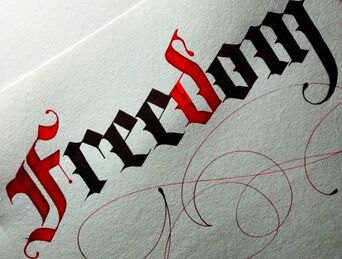
by Rev. Michaël Merle
We are responsible for the exercise of our freedom. We often hear of the urge and drive to claim our freedom and to be able to exercise it without hindrance or limitation, but do we hear of the need to act in freedom out of a true sense of responsibility?
We can recognise that in the creative restlessness of every human being there beats and pulsates those elements that are a significant part of our deepest and truest humanity: a search for truth, the insatiable quest for good, a hunger for freedom, a sense of the beautiful, and a living connection to the Christ in us. It is this connection to the indwelling of Christ that enlivens our seeing of the other. Christ dwells in every human being, even if they are unaware of it. This is the element that is often described as human dignity. We reveal people’s dignity by upholding their freedom: working with them so that they do not become the slave of things, the slaves of economic systems, the slaves of production, the slaves of their own products, the slaves of a false thinking that traps them from finding their true inner freedom. Such forms of slavery (to which all of us are prone) lead to injustice and oppression.
Our ability to respond (which springs from freedom) holds us to continue in a way that brings us into a relationship to responsibility – and does not allow us to fall into reaction without thought, consideration, discernment and the exercise of clear and consequent judgment.
It is possible for us to expand on a motivational saying:
Without commitment (in freedom) nothing starts (as it should).
Without consistency (in full responsibility) nothing is completed (well and truly as intended).
The Act of Consecration of Man reminds us that we, as a community of the Christ, know him in freedom as our helping guide. May his guidance on the path of responsibility of soul bring us to that place of freedom in the spirit.
We are responsible for the exercise of our freedom. We often hear of the urge and drive to claim our freedom and to be able to exercise it without hindrance or limitation, but do we hear of the need to act in freedom out of a true sense of responsibility?
We can recognise that in the creative restlessness of every human being there beats and pulsates those elements that are a significant part of our deepest and truest humanity: a search for truth, the insatiable quest for good, a hunger for freedom, a sense of the beautiful, and a living connection to the Christ in us. It is this connection to the indwelling of Christ that enlivens our seeing of the other. Christ dwells in every human being, even if they are unaware of it. This is the element that is often described as human dignity. We reveal people’s dignity by upholding their freedom: working with them so that they do not become the slave of things, the slaves of economic systems, the slaves of production, the slaves of their own products, the slaves of a false thinking that traps them from finding their true inner freedom. Such forms of slavery (to which all of us are prone) lead to injustice and oppression.
Our ability to respond (which springs from freedom) holds us to continue in a way that brings us into a relationship to responsibility – and does not allow us to fall into reaction without thought, consideration, discernment and the exercise of clear and consequent judgment.
It is possible for us to expand on a motivational saying:
Without commitment (in freedom) nothing starts (as it should).
Without consistency (in full responsibility) nothing is completed (well and truly as intended).
The Act of Consecration of Man reminds us that we, as a community of the Christ, know him in freedom as our helping guide. May his guidance on the path of responsibility of soul bring us to that place of freedom in the spirit.
Looking for Fruits or Seeds?
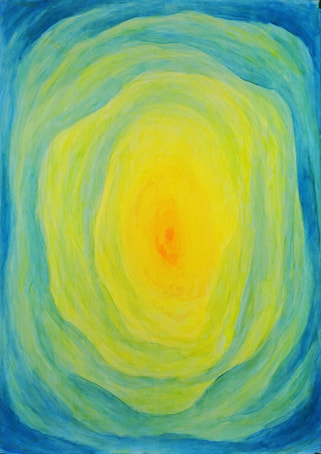
by Rev. Reingard Knausenberger
A young contemporary writer described a dream. In his dream he comes into a store. Behind the counter is an angel. He asks: ‘What do you sell?’ The angel replies: ‘Anything you wish.’ So he begins to place his order: peace for everyone, food for all, health, abundance in nature, a happy family, … Then the angel responds and says: I’m sorry, you seem to have misunderstood me. We do not sell fruits. We only sell seeds.
When John the Baptist and Jesus met at the river Jordan, it was a time when people yearned and looked for a ‘strong leader to fix things’. These two, though, were searching for new possibilities: where to from here?
Between them that new step became possible. When John perceived how the spirit of God descended upon Jesus like a ‘pollinating’ impulse, and Jesus’ receptive soul took this cosmic I AM impulse into his soul, a completely new perspective and meaning for life opened up. The outer circumstances hadn’t changed, but how the focus and understanding of a greater context shift was dramatic. For the next 3 years this new seed in the soul of the human being Jesus took hold and grew in inner stature, comprehension and power of integrity, living in alignment with a wholeness of being. Then when the body of Jesus had been completely transformed and permeated right into the marrow of the bone by the inner fire of this aligned I AM, it was laid into the ‘grave of the earth’. Thus, the new spirit seed was also received into the body of the earth, which is now being slowly permeated and transformed, just as the body of Jesus had been transubstantiated: To bear the fruit of Resurrection, of birthing a new spirit organization, a possibility for further future becoming for all humankind together with the earth.
But…humans carry the conscious power of I AM. Humans have the power of freedom to direct their intentions and actions. Human souls carry that new seed which multiplied through the Deed of Resurrection. To actively look for opportunities where growth, greater comprehension and context can unfold is up to us. Individually, yet together, we create the conditions for this spirit seed sown into our soul to grow and be nurtured. We are seed bearers, each one of us. What untapped potential is available!
This is the clarion call that reaches us in some form every day. The call of St. John still resonates.
A young contemporary writer described a dream. In his dream he comes into a store. Behind the counter is an angel. He asks: ‘What do you sell?’ The angel replies: ‘Anything you wish.’ So he begins to place his order: peace for everyone, food for all, health, abundance in nature, a happy family, … Then the angel responds and says: I’m sorry, you seem to have misunderstood me. We do not sell fruits. We only sell seeds.
When John the Baptist and Jesus met at the river Jordan, it was a time when people yearned and looked for a ‘strong leader to fix things’. These two, though, were searching for new possibilities: where to from here?
Between them that new step became possible. When John perceived how the spirit of God descended upon Jesus like a ‘pollinating’ impulse, and Jesus’ receptive soul took this cosmic I AM impulse into his soul, a completely new perspective and meaning for life opened up. The outer circumstances hadn’t changed, but how the focus and understanding of a greater context shift was dramatic. For the next 3 years this new seed in the soul of the human being Jesus took hold and grew in inner stature, comprehension and power of integrity, living in alignment with a wholeness of being. Then when the body of Jesus had been completely transformed and permeated right into the marrow of the bone by the inner fire of this aligned I AM, it was laid into the ‘grave of the earth’. Thus, the new spirit seed was also received into the body of the earth, which is now being slowly permeated and transformed, just as the body of Jesus had been transubstantiated: To bear the fruit of Resurrection, of birthing a new spirit organization, a possibility for further future becoming for all humankind together with the earth.
But…humans carry the conscious power of I AM. Humans have the power of freedom to direct their intentions and actions. Human souls carry that new seed which multiplied through the Deed of Resurrection. To actively look for opportunities where growth, greater comprehension and context can unfold is up to us. Individually, yet together, we create the conditions for this spirit seed sown into our soul to grow and be nurtured. We are seed bearers, each one of us. What untapped potential is available!
This is the clarion call that reaches us in some form every day. The call of St. John still resonates.
He Who Truly Loves Me, Reveals My Spirit
by Rev. Michaël Merle
It is good to note that the Whitsun reading does not reflect the outer events of the coming of the Spirit upon the disciples but rather turns to the inner experience of Whitsun, hearing the message from John Chapter 14 (verses 23 to 31) proclaimed. These words spoken at the Last Supper, open with a verse which Rudolf Steiner indicated needed an interpretive translation: “He who truly loves me, reveals my spirit."
The traditional translation directly from the New Testament Greek text reads: “He who loves me, keeps my word” or “He who loves me, bears my word in himself.” So we may ponder how it is that we keep and bear the word of Christ in ourselves such that in this activity we are disposed to reveal the spirit of Christ, and thus be endowed by the great grace of Whitsun?
Later on in this passage from John 14 we hear that the Spirit will teach us everything we need to know and will gently awaken in us the memory of all that Christ has said to us? So, what do the words of Christ, which we all carry in spirit, once gently awakened, accomplish in us? Are these words not the instructive, life-generating words of the new creation: the full human being?
With Whitsun we encounter an extraordinary picture of our future (which is presently in the act of becoming). For not only will the Spirit of Truth teach us all we need to know (and all we need to be), the Spirit will also awaken in us the words that reveal Christ. Thus, we shall come to know and truly embody the idea: “Christ in Us”, and then the promise of the Father coming to abide in us will happen: “Whoever truly loves me, reveals my spirit through the bearing of my word in himself, and my Father will love him, and we will come to him and abide with him forever.”
The fullness of God fills the human being, and the human being fully reveals God – thus the words of the Baptism in the Jordan addressed in regard to Jesus of Nazareth as the bearer of the Christ, become words for all future human beings: “This is my Son, the beloved, in whom I am fully revealed.”
It is good to note that the Whitsun reading does not reflect the outer events of the coming of the Spirit upon the disciples but rather turns to the inner experience of Whitsun, hearing the message from John Chapter 14 (verses 23 to 31) proclaimed. These words spoken at the Last Supper, open with a verse which Rudolf Steiner indicated needed an interpretive translation: “He who truly loves me, reveals my spirit."
The traditional translation directly from the New Testament Greek text reads: “He who loves me, keeps my word” or “He who loves me, bears my word in himself.” So we may ponder how it is that we keep and bear the word of Christ in ourselves such that in this activity we are disposed to reveal the spirit of Christ, and thus be endowed by the great grace of Whitsun?
Later on in this passage from John 14 we hear that the Spirit will teach us everything we need to know and will gently awaken in us the memory of all that Christ has said to us? So, what do the words of Christ, which we all carry in spirit, once gently awakened, accomplish in us? Are these words not the instructive, life-generating words of the new creation: the full human being?
With Whitsun we encounter an extraordinary picture of our future (which is presently in the act of becoming). For not only will the Spirit of Truth teach us all we need to know (and all we need to be), the Spirit will also awaken in us the words that reveal Christ. Thus, we shall come to know and truly embody the idea: “Christ in Us”, and then the promise of the Father coming to abide in us will happen: “Whoever truly loves me, reveals my spirit through the bearing of my word in himself, and my Father will love him, and we will come to him and abide with him forever.”
The fullness of God fills the human being, and the human being fully reveals God – thus the words of the Baptism in the Jordan addressed in regard to Jesus of Nazareth as the bearer of the Christ, become words for all future human beings: “This is my Son, the beloved, in whom I am fully revealed.”
The Incomplete Resurrection
by Rev. Reingard Knausenberger
This red sandstone cross, dated to be from well before the year 1000CE, can startle when the eye stops to rest and really look at it. We are used to seeing many different expressions of Jesus Christ on the cross, but almost always they are shown with a full body, the dying or resurrecting body. Here is a stark simple cross. At the point where the polar directions converge, at the ‘crossing point of the cross’, a countenance appears. Only this. In pure, carefully structured and ordered 3-dimensional plasticity. Space-filling, it creates face-to-face presence, while giving and creating space for the beholder to also be present. The closed eyes suggest that more than only outer seeing, also an inner beholding, is active. The gentle slant of the head strikes a tone of invitation and acceptance, instead of sternness or judgement. In its detail all the components of threefold-ness and fourfold-ness appear: the signature of the divine human organisation as it manifests in time and space.
Might this cross with its all-permeating red hue be an expression of the resurrecting Christ? Resurrection not as a finished deed, but as a continual process of overcoming death?
This red sandstone cross, dated to be from well before the year 1000CE, can startle when the eye stops to rest and really look at it. We are used to seeing many different expressions of Jesus Christ on the cross, but almost always they are shown with a full body, the dying or resurrecting body. Here is a stark simple cross. At the point where the polar directions converge, at the ‘crossing point of the cross’, a countenance appears. Only this. In pure, carefully structured and ordered 3-dimensional plasticity. Space-filling, it creates face-to-face presence, while giving and creating space for the beholder to also be present. The closed eyes suggest that more than only outer seeing, also an inner beholding, is active. The gentle slant of the head strikes a tone of invitation and acceptance, instead of sternness or judgement. In its detail all the components of threefold-ness and fourfold-ness appear: the signature of the divine human organisation as it manifests in time and space.
Might this cross with its all-permeating red hue be an expression of the resurrecting Christ? Resurrection not as a finished deed, but as a continual process of overcoming death?
Here resurrection shows itself as an unfinished process. As if it begins in that human place where the light of awareness to Self is ignited. The one place we can fully take charge of. Where we can control our actions of what to absorb, order, separate, dissolve; then connect and order anew, and comprehend.
“(In death) one needs a reference point, a container, a vessel on the sea of spirit… The power of thinking must have enough strength to be resilient and remain present as the soul releases from the body and expands: like the ground on which we walk has to be solid like crystal, so that we can push ourselves off from it.” (R. Steiner)
Our daylight-persona carries within a higher Mensch. Shrouded in darkness is that truly full-bodied human spirit being in us, waiting to be wrested free by walking the way of the cross. Maybe Christ needs us, so that his Deed of overcoming death into resurrection can be completed?
“(In death) one needs a reference point, a container, a vessel on the sea of spirit… The power of thinking must have enough strength to be resilient and remain present as the soul releases from the body and expands: like the ground on which we walk has to be solid like crystal, so that we can push ourselves off from it.” (R. Steiner)
Our daylight-persona carries within a higher Mensch. Shrouded in darkness is that truly full-bodied human spirit being in us, waiting to be wrested free by walking the way of the cross. Maybe Christ needs us, so that his Deed of overcoming death into resurrection can be completed?
The Mystery of Faith
by Rev. Michaël Merle
The Easter Mystery – the mystic presence, hidden religious significance of the Resurrection – is at the heart of the Mystery of Faith. It is the belief in divine revelation that lies beyond human understanding, but which connects us to the encounter with the divine. Here we are well able to consider the old formula of the Mystery of Faith:
Christ has Died, Christ is Risen, Christ will Come Again
In our renewed view of Easter and the Mystery it reveals we come to realise that this new faith as expressed in a new confession lives not in our feeling for the encounter with the divine but in our renewed thinking. Our new Mystery of Faith is thought in us:
Christ’s suffering and death, His resurrection, His revelation in all ages of the earth to come.
For in the Mystery of Easter we come to hear the words of transubstantiation: Take with the Bread, Take with the Wine … My Body, My Blood, but we also hear: And he went on …
These new words of confession and faith rest in the giving again to humankind the Mystery of Godhead. What is Godhead? It is the essence or substance (ousia) of God. Humankind is given again the divine nature of God. Divinity is given once more to humankind. Through Christ’s death as a human being, human beings enter into a renewed life possibility – a life that is the life of Christ, the creating life of the Father’s divine substance in the light of the Spirit.
“Ever since the creation of the world, the supersensible nature of the divine Being (Godhead) has been spiritually perceptible in the kingdoms of creation: His eternal creative power and His divine greatness. Therefore there is no excuse for the human beings who fail to relate to the divine world with reverence, praise and gratitude, since they are able to perceive that world. In their thinking they have ended up with a void, and therefore their hearts have become blind and darkened.” (St Paul’s Letter to the Christian Community in Rome, Chapter 1, verses 20-21, Jon Madsen’s translation of Emil Bock’s translation).
This is expressed in our Passiontide Epistle: “… empty is the place of your heart, …”
“But now, true being, the divine righteousness, has appeared … that true divine being (Godhead) which Man can attain when he unites himself in faith with Christ. The way is open to all who have faith. In that, there is no distinction, … the way to the true being is open again to all human beings, without merit, purely as a gift of grace from God: through the salvation that has come about through Christ Jesus.” (Romans 3: 21-22, 24)
This is expressed in our Easter Epistle: ‘The grave is empty, The heart is full …”
The Mystery of Faith is found in Godhead being again given to Man.
The Easter Mystery – the mystic presence, hidden religious significance of the Resurrection – is at the heart of the Mystery of Faith. It is the belief in divine revelation that lies beyond human understanding, but which connects us to the encounter with the divine. Here we are well able to consider the old formula of the Mystery of Faith:
Christ has Died, Christ is Risen, Christ will Come Again
In our renewed view of Easter and the Mystery it reveals we come to realise that this new faith as expressed in a new confession lives not in our feeling for the encounter with the divine but in our renewed thinking. Our new Mystery of Faith is thought in us:
Christ’s suffering and death, His resurrection, His revelation in all ages of the earth to come.
For in the Mystery of Easter we come to hear the words of transubstantiation: Take with the Bread, Take with the Wine … My Body, My Blood, but we also hear: And he went on …
These new words of confession and faith rest in the giving again to humankind the Mystery of Godhead. What is Godhead? It is the essence or substance (ousia) of God. Humankind is given again the divine nature of God. Divinity is given once more to humankind. Through Christ’s death as a human being, human beings enter into a renewed life possibility – a life that is the life of Christ, the creating life of the Father’s divine substance in the light of the Spirit.
“Ever since the creation of the world, the supersensible nature of the divine Being (Godhead) has been spiritually perceptible in the kingdoms of creation: His eternal creative power and His divine greatness. Therefore there is no excuse for the human beings who fail to relate to the divine world with reverence, praise and gratitude, since they are able to perceive that world. In their thinking they have ended up with a void, and therefore their hearts have become blind and darkened.” (St Paul’s Letter to the Christian Community in Rome, Chapter 1, verses 20-21, Jon Madsen’s translation of Emil Bock’s translation).
This is expressed in our Passiontide Epistle: “… empty is the place of your heart, …”
“But now, true being, the divine righteousness, has appeared … that true divine being (Godhead) which Man can attain when he unites himself in faith with Christ. The way is open to all who have faith. In that, there is no distinction, … the way to the true being is open again to all human beings, without merit, purely as a gift of grace from God: through the salvation that has come about through Christ Jesus.” (Romans 3: 21-22, 24)
This is expressed in our Easter Epistle: ‘The grave is empty, The heart is full …”
The Mystery of Faith is found in Godhead being again given to Man.
by Rev. Reingard Knausenberger
Wherever there is a source of light, there is also a defined sphere of radiance around it. One can notice the tangible difference between being within the sphere of its radiance or outside of it, especially if other sensations like warmth, cold, fear or comfort are evoked through this relating. Approaching a campfire, for instance, the transition from being in pitch-dark walking toward this orb of light and being outside of it, until slowly moving into it and becoming completely immersed in it is dramatic.
Every human being is an original source of light. That it matters what quality of radiance emanates from this source is what painters wanted to indicate by drawing a halo around a person’s head. In our funeral service the earnest words are spoken that we are ‘beholden to the Spirit’ for all that we do in thought, in word and in deed. We are all influencers.
Luke 8: 16: No one lights a lamp and covers it with a vessel or hides it away, but puts it on a stand where all my see it.
The greatest source of light is the sun. The transition from darkest night to dawn to suddenly being immersed in full sunlight and vice versa in the evening is dramatic. Every day we practice going through this, also as an emotional and mental experience.
John 8: ‘A woman had been caught in adultery and they placed her in the middle…’
They placed her into the midst of the sphere of the Son light. The accusers remained more peripheral. This light sphere emanated from a living human source and was also ‘beholden to The Spirit’. It affected each person present in its sphere, differently, and yet the same. Each person was suddenly acutely aware of their own relationship to the same primal source, it could not be hidden or covered up. Each one present had a very deep need and yearning, differently, and yet the same in essence. This had brought them together in that moment. Every day the sun brings opportunity for renewed heart-to-heartlight to ignite.
Maybe that is the true purpose of the sun rising and setting?
Wherever there is a source of light, there is also a defined sphere of radiance around it. One can notice the tangible difference between being within the sphere of its radiance or outside of it, especially if other sensations like warmth, cold, fear or comfort are evoked through this relating. Approaching a campfire, for instance, the transition from being in pitch-dark walking toward this orb of light and being outside of it, until slowly moving into it and becoming completely immersed in it is dramatic.
Every human being is an original source of light. That it matters what quality of radiance emanates from this source is what painters wanted to indicate by drawing a halo around a person’s head. In our funeral service the earnest words are spoken that we are ‘beholden to the Spirit’ for all that we do in thought, in word and in deed. We are all influencers.
Luke 8: 16: No one lights a lamp and covers it with a vessel or hides it away, but puts it on a stand where all my see it.
The greatest source of light is the sun. The transition from darkest night to dawn to suddenly being immersed in full sunlight and vice versa in the evening is dramatic. Every day we practice going through this, also as an emotional and mental experience.
John 8: ‘A woman had been caught in adultery and they placed her in the middle…’
They placed her into the midst of the sphere of the Son light. The accusers remained more peripheral. This light sphere emanated from a living human source and was also ‘beholden to The Spirit’. It affected each person present in its sphere, differently, and yet the same. Each person was suddenly acutely aware of their own relationship to the same primal source, it could not be hidden or covered up. Each one present had a very deep need and yearning, differently, and yet the same in essence. This had brought them together in that moment. Every day the sun brings opportunity for renewed heart-to-heartlight to ignite.
Maybe that is the true purpose of the sun rising and setting?
'Light is Love, Sun-Spirit Revealing’
Christ – Who Has His Being In Love
by Rev. Michaël Merle
The three set Gospel readings for Epiphany – The Visit of the Magi, The Twelve-Year-old in the Temple, and The Wedding Feast at Cana (where the first sign is performed by Christ) – is followed on the Fourth Sunday of Epiphany with a Gospel reading that presents a healing. With the four Sundays concluded we enter into February with a brief period of reflection before entering Passiontide. Many Christians celebrate 2 February as Candlemas (the fortieth day after 25 December: Christmas Day), thereby bringing the Christmas and Epiphany times to a conclusion. What does this period after forty days of Christmas and Epiphany bring us?
Hans-Werner Schroeder puts it very well, as follows:
“In (the parables that will be read in this time in The Act of Consecration of Man) Christ teaches humanity. The teachings of Christ, however, must be understood correctly. Under no circumstances should we imagine anything which may be compared to the abstract, dry instruction which (may pass) as teaching today. In his teaching, Christ did not speak to the understanding of those who listened to him, but he led living forces from the spiritual world into the souls of the people. This is indicated in the gospels with the words (we shall hear on Sunday, 6 February): ‘For he taught as one in whom the creating powers themselves are at work; not in the usual style of the scribes’ (Matthew 7: 29 – Emil Bock’s translation rendered in English by Jon Madsen). This must be borne in mind if we are to understand the significance of the change from Epiphany – Christ uniting himself with humanity – to what now follows. During Epiphany the light of Christ begins to radiate from Jesus, revealing itself in love, and in the powers of transformation and healing. The people experience this revelation as something deeply affecting and changing their lives. Now they are to begin to understand what is happening for their sakes. For only when an experience becomes part of our understanding will it be possible for us to take it further.”
The parables that will come to us in the readings of February are the parable of the labourers in the vineyard and the parable of the sower and the seeds (from Matthew 20 and Luke 8). These two parables will reveal to us something of the mysterious nature of Christ’s teaching encountered in the new aspects of love. May our understanding grow for what has happened for our sakes, and may the love at the heart of these parables become part of our experience of life so that we may take our renewed understanding further.
The three set Gospel readings for Epiphany – The Visit of the Magi, The Twelve-Year-old in the Temple, and The Wedding Feast at Cana (where the first sign is performed by Christ) – is followed on the Fourth Sunday of Epiphany with a Gospel reading that presents a healing. With the four Sundays concluded we enter into February with a brief period of reflection before entering Passiontide. Many Christians celebrate 2 February as Candlemas (the fortieth day after 25 December: Christmas Day), thereby bringing the Christmas and Epiphany times to a conclusion. What does this period after forty days of Christmas and Epiphany bring us?
Hans-Werner Schroeder puts it very well, as follows:
“In (the parables that will be read in this time in The Act of Consecration of Man) Christ teaches humanity. The teachings of Christ, however, must be understood correctly. Under no circumstances should we imagine anything which may be compared to the abstract, dry instruction which (may pass) as teaching today. In his teaching, Christ did not speak to the understanding of those who listened to him, but he led living forces from the spiritual world into the souls of the people. This is indicated in the gospels with the words (we shall hear on Sunday, 6 February): ‘For he taught as one in whom the creating powers themselves are at work; not in the usual style of the scribes’ (Matthew 7: 29 – Emil Bock’s translation rendered in English by Jon Madsen). This must be borne in mind if we are to understand the significance of the change from Epiphany – Christ uniting himself with humanity – to what now follows. During Epiphany the light of Christ begins to radiate from Jesus, revealing itself in love, and in the powers of transformation and healing. The people experience this revelation as something deeply affecting and changing their lives. Now they are to begin to understand what is happening for their sakes. For only when an experience becomes part of our understanding will it be possible for us to take it further.”
The parables that will come to us in the readings of February are the parable of the labourers in the vineyard and the parable of the sower and the seeds (from Matthew 20 and Luke 8). These two parables will reveal to us something of the mysterious nature of Christ’s teaching encountered in the new aspects of love. May our understanding grow for what has happened for our sakes, and may the love at the heart of these parables become part of our experience of life so that we may take our renewed understanding further.
Setting Beginnings
|
by Rev. Reingard Knausenberger
From the stars I have descended – Every soul descends with a life purpose. We can make a commitment now anew to this purpose. Even if we do not have words to formulate what it is in our mind, we can know it is there and hold it in heart’s warmth. To the stars I will uplift myself -- Only the human being can set beginnings, decide to create new beginnings. Freely. The 1st of January as a date for the beginning of a new year is set by human decision, not founded on nature or cultural incentives. Other cultures have set other dates, e.g. the Ethiopian New Year falls on 11 September, while the Chinese New Year is established by the moon and the sun and occurs between 21 January and 20 February. Yes, we can set intentions and commit to them! We can decide to shift from ego-based intentions to soul-based intentions. Individually and communally, we have the capacity to commit to our higher purpose. Freely, knowingly, reliably committed. With Michael I will act – Desmond Tutu has given an example what it means to act with the spirit of St. Michael: fearlessly acting and speaking up (or: not allowing fear to dictate action), being receptive to what is true through a practice of staying connected with the source of existence; with absolute immediate trust in intuition working from the higher mind of conscience; bringing this into action, even proactively; and yet always returning to equanimity. With Christ will I live – Shining our light without reserve; knowing, feeling and owning our worthiness; being in forgiveness, gratitude and peace. Every day, every step a beginning and a fulfilment of going toward our future Self. (In italics: a verse by Rudolf Steiner)
|
